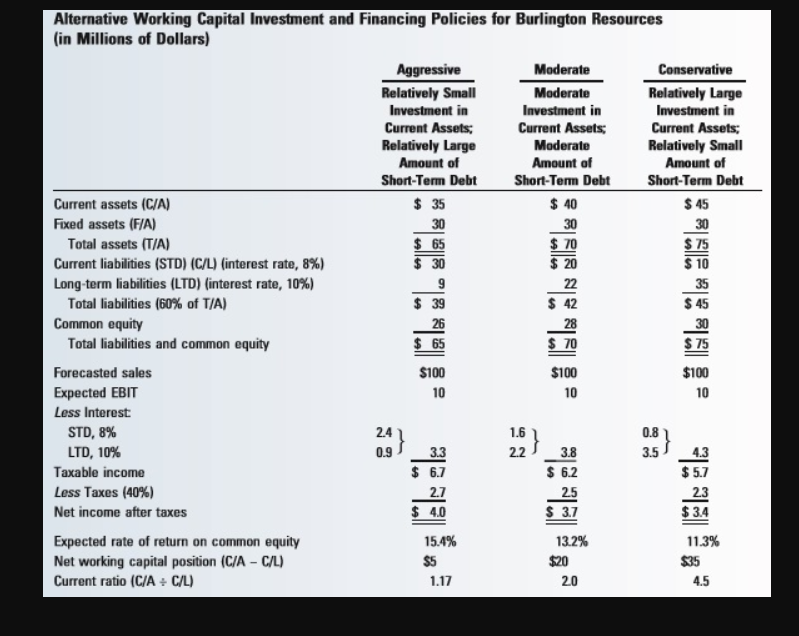Consider the comprehensive example involving Burlington Resources (Table 16.5). In this example, it was assumed that forecasted sales and expected EBIT, as well as the interest rates on short-term and long-term debt, were independent of the firm’s working capital investment and financing policies. However, these assumptions are not always completely realistic in practice. Sales and EBIT are generally a function of the firm’s inventory and receivables policies. Both of these policies, in turn, affect the firm’s level of investment in working capital. Likewise, the interest rates on short-term and long-term debt are normally a function of the riskiness of the firm’s debt as perceived by lenders and, hence, are affected by the firm’s working capital investment and financing decisions. Forecasted Sales Expected EBIT (in Millions (in Millions Interest Rate Policy of Dollars) of Dollars) STD (%) LTD (%) Aggressive $98 $9.8 9.1 10.1 Moderate 99 9.9 8.1 8.6 Conservative 100 10.0 7.1 7.1 Recompute Burlington’s rate of return on common equity under the set of assumptions concerning sales, EBIT, and interest rates for each of the three different working capital investment and financing policies provided in the table above. Round your answers to two decimal places. Policy Aggressive Moderate Conservative Expected Rate of Return on Common Equity % % %
|
Consider the comprehensive example involving Burlington Resources (Table 16.5). In this example, it was assumed that
Recompute Burlington’s rate of
|

Trending now
This is a popular solution!
Step by step
Solved in 2 steps with 2 images







